There are 5 types of Salmon in Ketchikan Alaska
You can easily learn them on your hand!
When I first moved to Ketchikan, the five types of Salmon always slipped my mind until I was taught this very simple way to remember
them. You easily learn them by looking at your hand!
- Your Thumb rhymes with Chum, hence Chum Salmon
- Your pointer finger is something you might sock someone in the eye with,
or Sockeye Salmon! - Your middle is the largest finger - for the King Salmon, the largest Salmon!
- Your ring finger is where you might wear a Silver ring....for a Silver Salmon!
- And your pinkie finger is easy! It's the Pink Salmon!
There are Five Types of Salmon in Ketchikan Alaska
King or Chinook Salmon
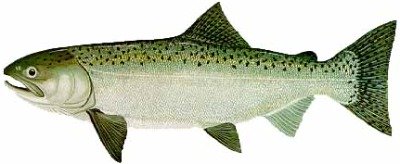 Alaskan King Salmon is both fun to catch and tasty!
Alaskan King Salmon is both fun to catch and tasty!
The largest species of salmon and least abundant, is known as the King Salmon or Chinook Salmon. It's a great tasting fish
and can weigh more than 40 pounds. The most common flesh color is red but it's possible to find white king salmon as well. Salmon Eggs
from the King Salmon are harvested for caviar in countries like Japan, China, & Russia. The Chinook salmon's large size and high-quality
flesh makes it one of Alaska's most valuable commercial fisheries. Chinook salmon are also one of Alaska's most prized sport fish.
Fast King Salmon facts: The King Salmon is Alaska's state fish. The largest Alaskan king ever caught was a 126-pounder in 1949 in a fish trap.
The distinguishing marks on an adult Chinook Salmon are the tail, which has spots that run up and down the entire span of the fin and the black lining of a Chinook’s mouth.
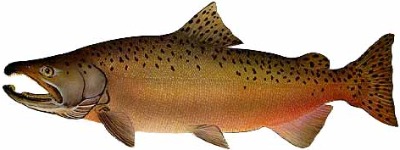 Alaskan King Salmon during spawning
Alaskan King Salmon during spawning
The months of May, June, and July are the best for King Salmon Fishing in Alaska's streams, though they can be caught year-round.
Eating - King Salmon is a large, oily fish which gives the salmon a 'buttery flavor'. It is great both fresh or frozen and is often served as steaks.
Silver or Coho Salmon
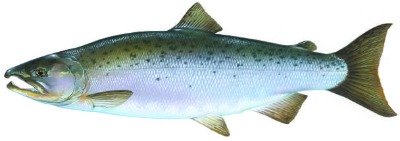 Silver Salmon is found in Ketchikan Alaska waters!
Illustration by Timothy Knepp U.S. Fish & Wildlife Service
Silver Salmon is found in Ketchikan Alaska waters!
Illustration by Timothy Knepp U.S. Fish & Wildlife Service
The Silver Salmon is the second largest of the types of salmon found in Alaskan waters. High quality Coho salmon are often frozen whole and sold as a delicacy in Europe. Restaurant owners like Silver or Coho Salmon because the fillets are the perfect size and it keeps its orange-red color. In addition to being great off the grill it's also a nice fish to smoke.
Coho salmon are also an extremely important sport fish in Alaska as they are pursued by fishermen both in marine and freshwater systems, adding millions of dollars annually to the state's economy.
Fast Silver Salmon facts: 75% of the coho catch in the U.S. comes from Alaska!
In the open ocean, Silver Salmon have silvery sides and a metallic blue back with irregular black spots. In fresh water spawning males have bright red on their sides and may also have bright green on their back and head, with darker coloration on their belly. The inside of the mouth of a Coho (Silver Salmon) is black with the exception of a white gum-line, which is how to distinguish it from the other types of Salmon. Coho are tenacious fighters, have a soft mouth, and will often make long runs that threaten to spool a reel or, on occasion, will run right at you making you believe you have lost it!
Coho Salmon average between 8 and 12 pounds in size and are usually between 24 and 30 inches in length.
The months of July through November are the peak times for coho fishing.
Eating - Silver Salmon is perfect both fresh & frozen.
Red or Sockeye Salmon
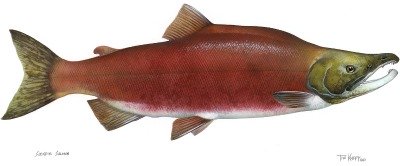 A spawning Sockeye Salmon. Illustration by Timothy Knepp U.S. Fish and Wildlife Service
A spawning Sockeye Salmon. Illustration by Timothy Knepp U.S. Fish and Wildlife Service
Sockeye Salmon are the most economically important types of salmon in Alaska. More pink and chum salmon are caught, but Sockeye Salmon are a higher quality fish and sell for a much higher price. More than fifty-percent of the Sockeye Salmon caught is frozen and sent to markets in the U.S. and Japan. Salted and packaged sockeye eggs (roe) is very valuable in Japan.
Fast Sockeye Salmon facts: Bristol Bay, Alaska is the sockeye salmon capital of the world. Also, Sockeye Salmon is the best choice for lox, a velvety, lightly smoked salmon often served on bagels.
 An Ocean Sockeye Salmon
An Ocean Sockeye Salmon
An Average Sockeye Salmon is about 6 pounds and can grow up to 3 feet long. More typical, however, is a fish measuring about 20 to 24 inches. Once a Sockeye Salmon is caught, you are in for a wild battle of wild leaps! Sockeye Salmon are the types of salmon prized by fly fishermen.
Adult sockeyes return to spawn between July and October.
Eating - Sockeye Salmon is good both fresh and smoked and is often made into lox.
Pink or Humpy Salmon
 An Ocean caught Pink Salmon
An Ocean caught Pink Salmon
Pink salmon are the smallest of the five types of salmon, averaging 3-5 pounds, but can be found up to about 14 pounds. But don't discount their size, they are tenacious fighters!! While most folks believe the Pink Salmon are not good for eating, an ocean caught pink or humpy is excellent when eaten promptly after being caught or, more commonly, smoked. The meat is soft, especially after freezing.
Fast Pink Salmon facts: The humpy is by far the most abundant of all types of salmon in Alaska with annual commercial catches exceeding 140 millions fish! Almost all commercially caught pink salmon is canned.
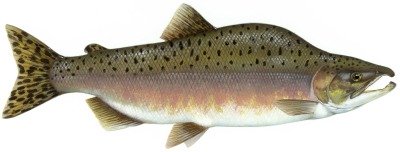 A spawning Pink Salmon. Illustration by Timothy Knepp U.S. Fish and Wildlife Service
A spawning Pink Salmon. Illustration by Timothy Knepp U.S. Fish and Wildlife Service
Pink Salmon are called humpies because adult males develop a strongly hooked snout and sharp teeth, and an enormous hump behind the head. The females become an olive green color with a lighter colored underside. Adults living in the saltwater don't have the hump feature and have steel blue to blue-green backs, silver sides, and a white belly. They also have very distinguishable large, oval spots on their back, adipose fin and both lobes of the tail.
Huge numbers of pink salmon spawn in Ketchikan streams between late June and mid-October.
Eating - Pink Salmon is good eating fresh but the flesh turns soft after freezing. It is typically found smoked & canned and is great for making recipes! (I love salmon salad sandwiches!)
Dog or Chum Salmon (Keta)
 An Ocean Chum Salmon
An Ocean Chum SalmonChum Salmon are great fighters, and therefore fun for sport fishermen. And until a few years ago, chum salmon were the least commercially important of the Pacific salmon. However, a growing market has developed in Japan and Europe for fresh and frozen fish and Chum Salmon are now being commercially harvested.
As a food fish the Chum Salmon is best smoked or dried. Chum are available in huge numbers, the meat is firm, and most say the meat is mild in taste yet you won't often see chum fillets in your supermarket.
Fast Chum Salmon facts: Chum salmon have always been an important source of food for native
people and their dogs in over 200 rural villages in interior Alaska. Another amazing salmon fact...many
chum salmon in the Yukon River have traveled more than 2,000 miles to spawning grounds in the Yukon Territory. A Chum Salmon has the
brightest color and possess the highest oil content at the beginning of their journey.
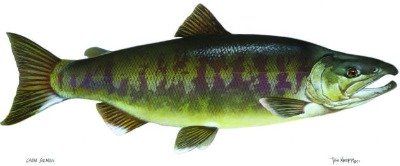 Spawning Chum Salmon have beautiful colors! Illustration by Timothy Knepp U.S. Fish and Wildlife Service
Spawning Chum Salmon have beautiful colors! Illustration by Timothy Knepp U.S. Fish and Wildlife ServiceCatch a chum out in the saltwater and it will probably be metallic greenish-blue along the back with black speckles. In fact, they look a lot like the Silver or Sockeye types of Salmon when in the ocean. Their color changes in fresh water, however, developing prominent vertical stripes of red & black down their sides. The longer they're in the water the more prominent a male's hooked snout becomes, baring sharp teeth. Chum salmon range in size from 4 to over 30 pounds, but average between 7 and 18 pounds.
Chum are harvested primarily in the months of July and August.
Eating - Chum Salmon is a very dry fish and is best used either dried or in soups & chowders.

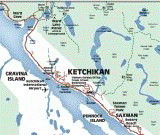


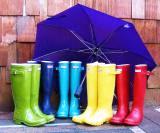

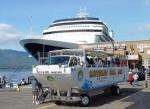

New! Comments
Have your say about what you just read! Leave me a comment below.